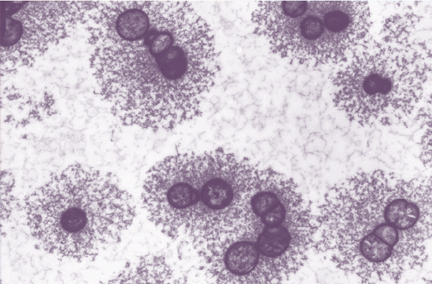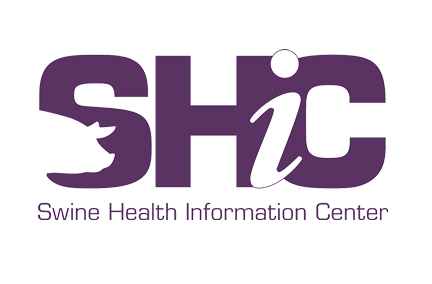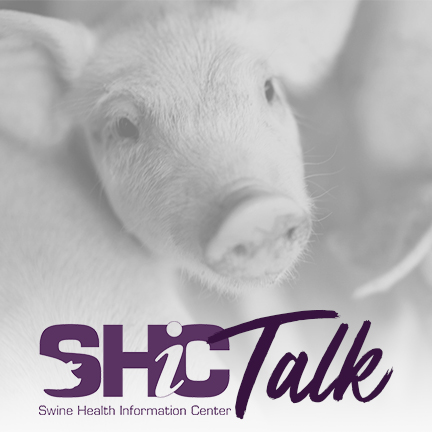
SHIC, launched in 2015 with Pork Checkoff funding, continues to focus efforts on prevention, preparedness, and response to novel and emerging swine disease for the benefit of US swine health. As a conduit of information and research, SHIC encourages sharing of its publications and research. Forward, reprint, and quote SHIC material freely. SHIC is funded by America’s pork producers to fulfill its mission to protect and enhance the health of the US swine herd. For more information, visit http://www.swinehealth.org or contact Dr. Sundberg at [email protected].

Already this spring, the Swine Health Information Center (SHIC) has completed Emerging Disease Fact Sheet updates on getah virus, S. zooepidemicus, and Salmonella 1,4,[5],12:i:-. And more recently, three more updated fact sheets on Chikungunya virus, Menangle virus, and Porcine sapovirus have been posted as well. SHIC continually updates its Swine Disease Fact Sheet library so these expert-prepared documents are available to benefit producers, practitioners, and diagnosticians to assist when an emerging disease is found.
In the refreshed Chikungunya fact sheet, updated information on vector characteristics, testing protocol in humans, and vaccine development were incorporated. In the Menangle virus fact sheet, an improved description of the 1997 outbreak in Australia was included along with updated information on viral characteristics. The Porcine sapovirus fact sheet now discusses a recent outbreak in US swine (Shen H, Zhang J, Gauger PC, et al. Genetic characterization of porcine sapoviruses isolated from pigs during a diarrhea outbreak in Iowa, 2019. Transbound Emerg Dis. Mar 29 2021;doi:10.1111/tbed.14087h) while updated prevalence and classification information for sapoviruses was added as well.
SHIC Swine Disease Fact Sheets begin with a summary section for easy access to the most important information. The comprehensive literature review process for recent updates, and insertion of additional information into the fact sheets, results in more complete information on the emerging swine disease. All revised fact sheets now follow this intuitive order:
Researchers, practitioners, and diagnosticians are encouraged to share new information that would update content of Fact Sheets by contacting SHIC at [email protected].

The Swine Health Information Center (SHIC) 2021 Plan of Work includes the commitment to join with other organizations to help to fill gaps in research and information needed to prevent, prepare, and respond to foreign animal or emerging diseases. SHIC has focused on viral pathogens/diseases of swine because of the risk they present to the US swine herd by virtue of their ability to travel and transmit. SHIC also takes seriously the potential for bacteria, which can also be pathogens, to cause emerging disease. To provide needed information on bacteria, SHIC recently executed a Memorandum of Understanding with the University of Georgia Research Foundation to become a member of the Global Infectious Disease Intelligence Consortium and work with the Foundation’s Center for the Ecology of Infectious Diseases (CEID). The objective is to add another source of relevant information about existing and emerging infectious diseases. The result will be better intel on possible emerging bacteria to go along with the current information on potential emerging viruses.
One CEID project collected a dataset of known bacteria-host pairs (both wildlife and livestock), and tables of bacteria and host life history traits. After development of a machine learning model looking at a subset of this dataset, data was generated that could help predict potential bacterial spillovers from wildlife into swine. So far, known bacteria-host pairs were collected from the Enhanced Infectious Diseases (EID2) Organisms Interactions Database, Global Mammal Parasite Database, as well as Shaw et al. (2020, Molecular Ecology).
From this, 4648 known bacteria-host pairs, 1222 mammal hosts, and 1665 bacterial pathogens were identified. As this work continues, CEID will be adding data on pathogenicity of bacteria to predict a more quantifiable risk to the pork industry.
Strep equi spp zooepidemicus (S. zoo) is an example of bacterial spillover between species and was added to the SHIC Swine Bacterial Disease Matrix in February 2021. In adding S. zoo to the Swine Bacterial Disease Matrix, the potential public health impact, the need for more efficacious intervention tools, diagnostic capabilities, potential impact on swine health, welfare and production and potential market impacts were all considered. A fact sheet focused on S. zoo was added to the SHIC Fact Sheet library as well.

Episode 7 of SHIC Talk, the podcast produced by the Swine Health Information Center (SHIC), is live. This episode features SHIC Executive Director Dr. Paul Sundberg and Dr. Kerry Leedom-Larson, lead public health veterinarian at the Center for Food Security/Public Health at Iowa State University, addressing SHIC’s Swine Disease Fact Sheets. Host Barb Campbell Determan talks with them about the process for fact sheet development, updates, and how these documents become a one-stop-shop for information on swine diseases. Click here to listen to SHIC Talk Episode 7.

Swine Health Information Center (SHIC) African swine fever (ASF) research in Vietnam was the topic of a presentation during the National Hog Farmers’ Global Hog Industry Virtual Conference. SHIC Executive Director Dr. Paul Sundberg provided the update included in the Conference presented on May 26. You can listen to the ASF Vietnam update here.
As the world deals with the COVID-19 pandemic, SHIC continues to focus efforts on prevention, preparedness, and response to novel
and emerging swine disease for the benefit of US swine health.

This month’s Domestic Swine Disease Monitoring Report shows that porcine reproductive and respiratory syndrome virus (PRRSV) continues to be very active, especially in wean to market age category. A second wave of detections for the PRRSV RFLP 1-4-4 L1C variant strain was detected. After a couple of months with a continued increase in detection of PDCoV, during May PDCoV detection has had a moderate decrease in the age categories adult/sow farm and wean to market. The advisory group has shared their practical points for preventing a new wave of pathogens activity for the upcoming fall and winter seasons in the report as well. In the podcast, the SDRS hosts talk with Dr. Paul Yeske about his experience on handling the PRRSV RFLP 1-4-4 L1C variant strain since its emergence and in the second wave and how to intervene to improve animal health.

In the June report, read about Vietnam putting a hold on pork imports from Thailand. Vietnamese officials made the decision after authorities detected African swine fever (ASF) in a batch of 980 live pigs imported from Thailand on May 19, 2021. The European Food Safety Authority scientific opinion on the ability of different products to transmit ASF is addressed. And information is included on detection of two Influenza A variants in Canada in two unrelated human cases in Manitoba.
Copyright 2025 | Swinehealth.org | Website by Heartland Marketing Group